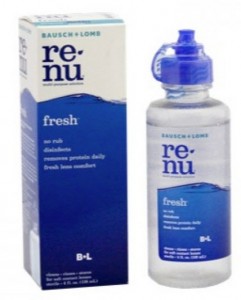
Results: Although osmolarity measurements for undiluted solutions differed statistically from reference standard values, all biases were in the tolerance range proposed by the manufacturer except for the 850 mOsm/kg solution. Finally, in an agreement study, measurements were made in two sets of 60 subjects to compare TearLab versus Fiske 110 (using both 2 µl and 4 µl tear sample). In the second study, measurements were made on different types of contact lens care solutions. In the first, Fiske 110 measurements were made on undiluted and diluted (1:1, 1:4 and 1:9 dilutions) standard samples of different osmolarity values: 50, 290 and 850 mOsm/kg and 297 and 338 mOsm/l. Methods: Three separate studies were performed. Purpose: The purpose of this study was to examine the precision and accuracy of the Fiske 110 Osmolarity System under different protocols to determine the possible applications of this device in tear film research and clinical practice. This study suggests that lens care systems play an important role in surface roughness and RI of CL. The water content varied between 0% (Nelfilcon A in ReNu Multiplus, Senofilcon A in AOSEPT Plus, and Methafilcon A in Solocare Aqua) and 4.1% (Hilafilcon B in Solocare Aqua) The higher change in roughness was obtained with ReNu Multiplus in the lens Comfilcon A (with an increase of 27.2 nm) and Senofilcon A (with an increase of 16.7 nm). All the materials changed, to a greater or lesser extent, their roughness and RI, after being immersed in the different solutions.

Significant changes were observed on the CL materials when exposed to lens care systems. The measurements were performed before and after the lenses were immersed in each care solution. Lenses were immersed in the lens care systems, and then measurements with CLR 12-70 digital automated refractometer and atomic force microscopy analysis on Tapping mode were recorded. Several CL and three commercially available and appropriate lens care solutions were used (two polyhexamethylene biguanide and one hydrogen peroxide care systems).

This information provides us with a better understanding of how care solutions affect CL materials. The aim of this study was to analyze the influence of different lens care systems in surface roughness and refractive index (RI) of contact lenses (CL). This study detailed many physical properties of soft lens solutions that are not readily available and indicated that certain properties vary significantly among these products. Their viscosity and ST values were similar (p = NS). The un-neutralized peroxide solutions had very different pH and osmolality values from all the solutions that would directly contact the eye (p < 0.001). At 34 degrees C, the average viscosity of most solutions was between 0.70 and 0.83 cP, except for COM, which had a viscosity of 1.92 cP (p < 0.001). The average viscosity of most solutions at room temperature was between 0.95 and 1.26 cP, except for COM (3.02 cP p < 0.001). These three groupings were significantly different (p < 0.001). The remaining solutions exhibited intermediate ST values of approximately 40 mN/m. OFX, OFR, and SoloCare Aqua exhibited low ST values in the 30 to 35 mN/m range. Neutralized AO and SoftWear saline had ST values of approximately 67 mN/m. OFX exhibited a significantly lower osmolality (225 mOsm/kg p < 0.001), whereas UC was significantly higher (329 mOsm/kg p < 0.001). The osmolality values of most solutions were in the 275 to 310 mOsm/kg range. The pH of most solutions was close to neutral (range 7.00-7.36), except for OFX and neutralized AO and Clear Care. The peroxide solutions were measured before and after neutralization.


#Lenscare contact lens solution review plus#
The solutions examined were Opti-Free Express (OFX), Opti-Free RepleniSH (OFR), Complete Moisture Plus (COM), UltraCare (UC), ReNu MultiPlus, Sensitive Eyes, AOSept (AO), Clear Care, SoloCare Aqua, and SoftWear saline. Viscosity measurements were also taken at 34 degrees C. The pH, osmolality, surface tension (ST), and viscosity of various soft contact lens solutions were measured at room temperature. To investigate the physical properties of commercially available soft contact lens solutions.


 0 kommentar(er)
0 kommentar(er)
